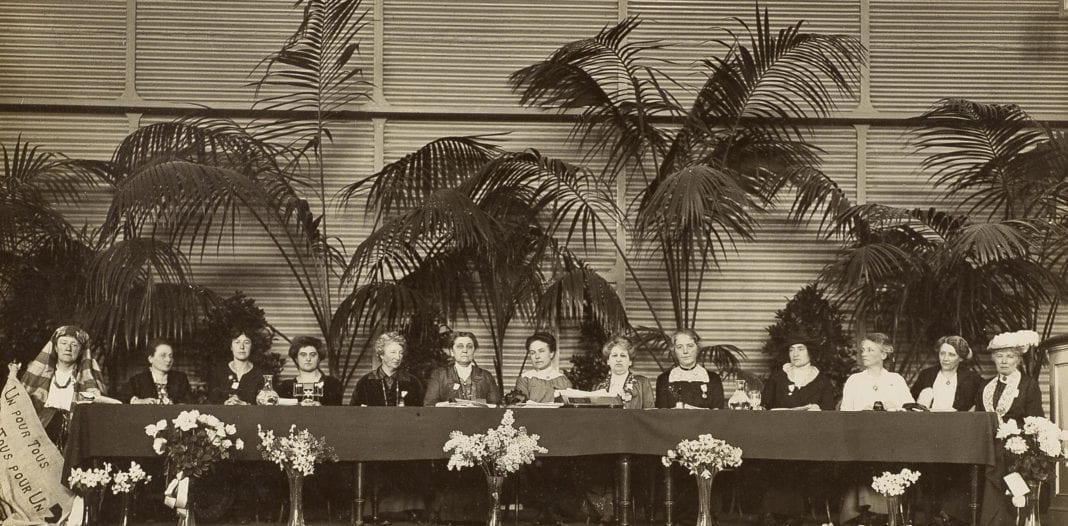In the Netherlands, both men and women are allowed to go to the ballot boxes — because they are equal in the eyes of the law. Seems normal right? Right, but the right to vote for women was only introduced in the Netherlands in 1919.
More than 90 years ago, women going to the ballots to cast their votes wasn’t seen as a very “normal” thing.
So let’s talk about the history of women’s suffrage in the Netherlands and see how far the country has come.
The early days of the women’s suffrage movement in the Netherlands
The Constitution of 1848 did not explicitly state that the right to vote applied exclusively to men.
According to the law, one had to pay a certain sum of taxes to vote and to be in possession of that right as a citizen — which women did not.
READ MORE | Hannie Schaft: the Dutch spy who was executed by the Nazis
Women were not allowed to vote and were taken for granted by the legislature. According to Dutch law, they were emotionally unreliable and quite incompetent and, therefore, had no civil rights.
Introducing Aletta Jacobs
In 1883, the physician Aletta Jacobs tried to make use of the lack of the explicit exclusion of women in the electoral law.
She tried to register herself as a candidate in Amsterdam but was blatantly refused.
This led to a constitutional revision in 1887, in which it was explicitly stated that the right to vote applied only to men.
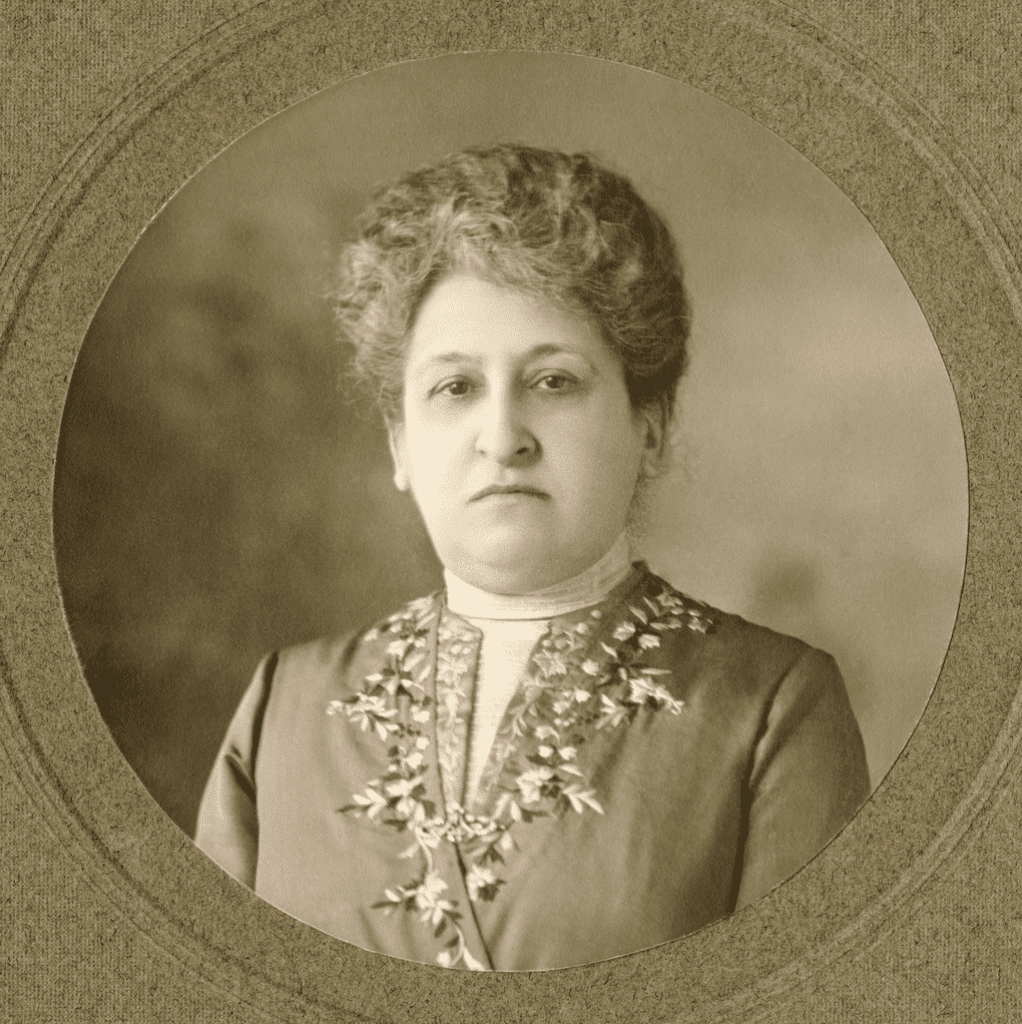
Attendance protests
The ‘First Feminist Wave’ led to protests in the United States and Great Britain in the 70s of the 19th century.
This was mostly centred around the lack of suffrage for women. These protests also came to the Netherlands in the late 1980s, as various associations for women’s suffrage were established.
READ MORE | 11 kick-ass Dutch women you should know about this International Women’s Day
Some examples include:
- The Vrije Vrouwen Vereeniging (1889-1903, Free Women’s Association), started by Wilhelmina Drucker, and
- The Vereniging voor Vrouwenkiesrecht (1894-1919, Association for Women’s Suffrage), started by Wilhelmina Drucker, Annette Versluys-Poelman and Aletta Jacobs.
The rise of the middle-class bourgeoisie
In the period after 1870, a certain feminist consciousness developed among the ‘well-to-do’ women in the Netherlands, under the influence of the international women’s suffrage movement in England and the United States.
This women’s movement fought against the deprived position of women in Dutch society.
The aim was access for women to all forms of education, the right to work in the public service under the same conditions as men, and the same right to management as well as sexual liberation for all women.
Which women’s organizations were involved in women’s suffrage?
Vrije Vrouwen Vereeniging (VVV) (1889-1903)
On October 2, 1889, the Vrije Vrouwen Vereeniging (VVV) was established.
The aim of the association was “to promote the social importance of women” as well as fight for their “mental and political development”.
Four years later, the VVV organized a public meeting with its main theme as ‘women’s suffrage’.
READ MORE | Activism in the Netherlands: International Women’s Day
They also got some support from socialist circles. Due to the fact that only rich men could vote, socialists who were fighting for general suffrage teamed up with the VVV to fight for the general right to vote.
The collaboration was short because prominent socialists of that time — such as Henri Polak and Frank van der Goes — thought the demands of women were over the top and that they had gone too far.
Vereeniging voor Vrouwenkiesrecht (1894-1919):
On 5 February 1894, a number of women from various religious and political backgrounds set up the Vereeniging voor Vrouwenkiesrecht in Amsterdam.
In the beginning, the society had great difficulty recruiting new members. In Amsterdam and other neighbouring cities, spouses, family and friends often exerted pressure on women not to become members of the society.
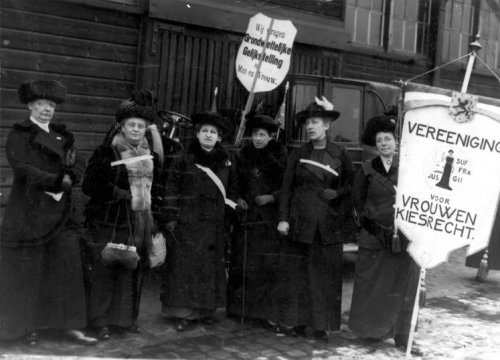
Men were allowed to join but not on the board. Due to the efforts of the association, an understanding of the struggle for women’s suffrage gradually became a reality.
By the year 1900, the society could count more than 1,089 members spread over 15 cities in the Netherlands.
Due to the huge success and the subsequent attention from the Congress of the World Women’s Suffrage Union in Amsterdam in 1908, the society saw a sharp increase in its number of members.
Nederlandse Bond voor Vrouwenkiesrecht:
A number of members who had left the Vereeniging voor Vrouwenkiesrecht founded the Nederlandse Bond voor Vrouwenkiesrecht (Dutch bond for women’s suffrage) on 25 February 1907.
This association’s aim was to ‘fight for women’s suffrage’. They thought that women first had to learn how to lead and judge independently, and only then could they participate in political life.
READ MORE | Being a feminist in the Netherlands: surprisingly, it’s a challenge
Neutrality and impartiality were better guaranteed here. The difference between this Association and the other ones was that they allowed men in management positions, and as a result, succeeded in gaining wider support for women’s suffrage with the general public.
They believed that in order to achieve women’s suffrage, men also had to join the fight!
Members of this Association were generally of ‘better descent’ and gentler than the members of the Society for Women’s Suffrage.
The Constitution Revision of 1917
In 1917, the various protests and public speeches by women ultimately led to a constitutional amendment whereby women were given the right to be elected.
This meant that they were allowed to stand for election, but still were not allowed to vote for others. In 1918, Suze Groeneweg was elected as the first woman in the Lower House for the SDAP.
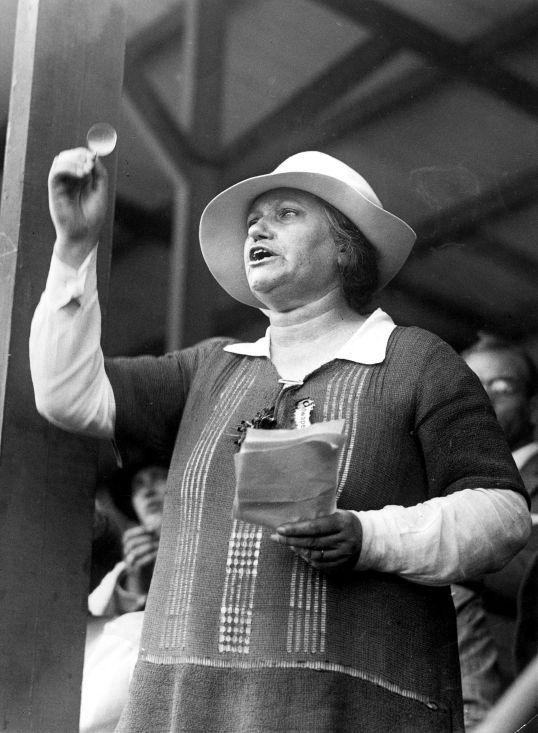
The right to vote in 1919
Passive women’s suffrage was followed in 1919 by a bill by Henri Marchant, which introduced general women’s suffrage.
This bill was accepted by the Lower House, and on 18 September, Queen Wilhelmina signed a law that gave women full suffrage.
In the first elections that followed, in 1922, seven women were voted into the Lower House.
Political contributions to the progress of women
After 1919, some futile attempts were made to establish a women’s party in the Netherlands. However, this idea did not appeal to many, as feminists and other women rather chose to organise women’s groups within existing political parties.
The 1922 elections showed that women did not vote that differently from men. The political atmosphere before the introduction of women’s suffrage was practically the same.
However, more and more women were voted into the Lower House in the 1920s.
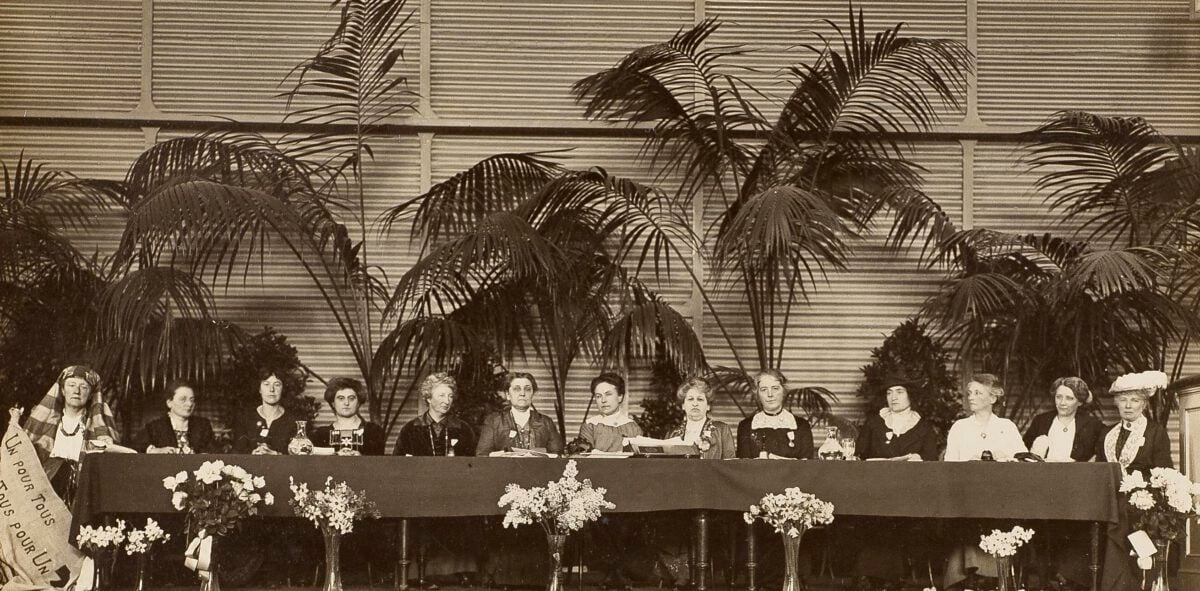
Which women were active in the movement for women’s suffrage in the Netherlands?
Aletta Jacobs (1854-1929)
She was a radical feminist and a woman with a political acumen. Jacobs took up the electoral issue when she wanted to be the first woman to stand for election in Amsterdam in 1883.
According to the constitution on the right to vote, it didn’t say anywhere that she was not allowed to register and run for office.
Technically, women were allowed to run for office and could also be voted for, because the law spoke of every ‘Dutch’ citizen. The city council of Amsterdam interpreted the text differently and refused to allow Jacobs to run for office.
READ MORE | 11 kick-ass Dutch women you should know about on International Women’s Day
Jacobs appealed to the Supreme Court but was unsuccessful.
In 1893 she joined the Vrije Vrouwen Vereeniging (VVV) (Free Women Association) when they also started fighting for women’s suffrage.
From 1903-1919 she was president of the Vereeniging voor Association for Women’s Suffrage. She also played an important role in the international women’s suffrage movement.
Wilhelmina Drucker (1847-1925)
Wilhelmina Drucker was a radical feminist and co-founder of the Free Women’s Association (VVV) in 1889.
Wilhelmina grew up under difficult circumstances due to her father refusing to marry her mother and legally recognise her and her siblings as his children.
She and other Dutch women set up a weekly magazine for girls and women called De Vrouw (The Woman) in 1888. A year later, she founded the Free Women’s Association which would later become the Vereeniging voor Vrouwenkiesrecht (Association for Women’s Suffrage).
She was a strong advocate for women’s rights, lectured around the Netherlands and was also known to have helped in founding several women’s trade unions.
Due to the difficult circumstances surrounding her upbringing, she also played a huge role in the fight for unmarried women and their children.
Rosa Manus (1881-1942)
Rosa Manus got into the women’s suffrage movement in 1908 at the Congress of the International Woman Suffrage Alliance (IWSA).
At that conference, she met Wilhelmina Drucker and the American suffragist Carrie Chapman Catt, who would become her partners and friends in the fight for women’s suffrage.
She was a member of the Vereeniging voor Vrouwenkiesrecht and would later serve as the Society’s secretary.
READ MORE | Meet Mata Hari: the famous Dutch first World War spy
She was also very involved internationally in the work of the World Association for Women’s Suffrage and the International Women’s Union for Peace and Freedom.
Rosa Manus was also Jewish and, unfortunately, was deported by the Nazis in 1940 and transferred to Ravensbrück concentration camp in October 1941.
Although the circumstances around her death aren’t very clear, historians suggest that she was probably gassed at Bernburg in 1942.
Annette Versluys-Poelman (1853-1914)
Annette Versluys-Poelman was co-founder and president (1894-1902) of the Society for Women’s Suffrage.
Under her inspiring leadership, the association became an independent movement that gained influence in many cultural and political circles.
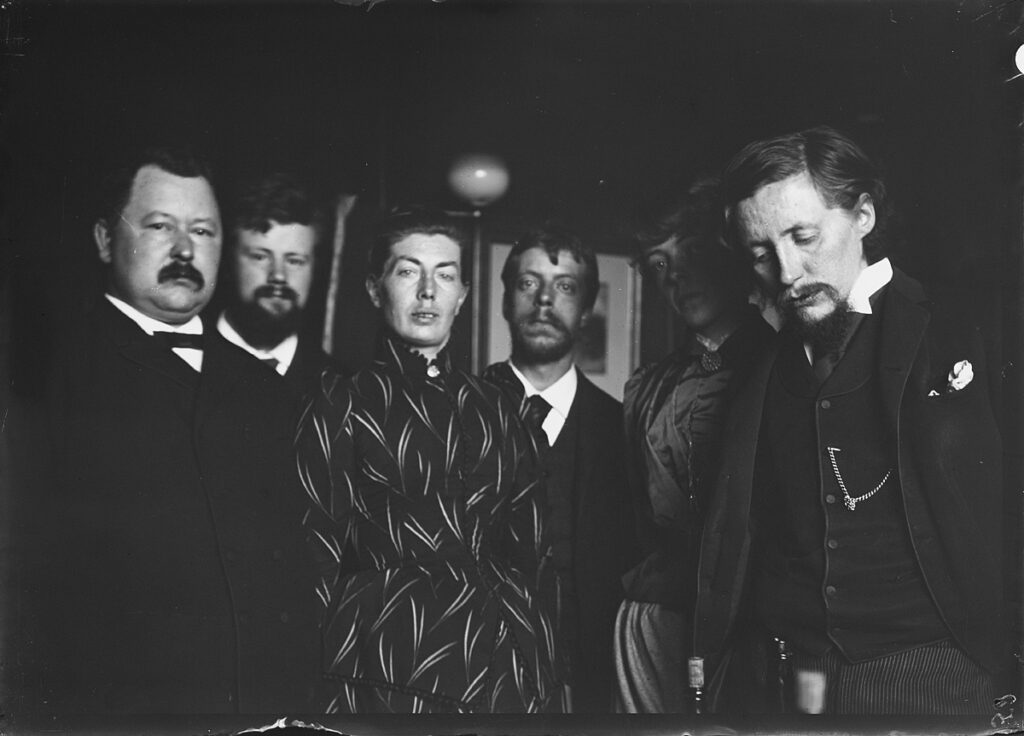
She also founded the Onderlinge Vrouwenbescherming (Women’s Mutual Protection Society) and fought for the rights of unmarried mothers and their “illegitimate” children.
Esther Welmoet Wijnaendts Francken-Dyserinck (1876-1956) and Lizzy van Dorp (1872-1945)
Esther Welmoet was a Dutch journalist and feminist and also co-founder of Dutch Girl Guiding and the World Association of Girl Guides and Girl Scouts (WAGGGS).
Lizzy van Dorp was a Dutch lawyer, politician and feminist. Van Dorp studied law at the University of Leiden and, in 1901, became the first woman to obtain a law degree in the Netherlands.
On 25 February 1907, they founded the Nederlandsche Bond voor Vrouwenkiesrecht (VVK). They had left the Society for Women’s Suffrage out of dissatisfaction with the Society’s direction.
They found that members with a more moderate way of thinking did not receive much attention or have a say on important issues within the association.
Clara Meijer-Wichmann (1885-1922)
Clara Meijer-Wichman was a German-Dutch lawyer, writer, anarchist and feminist.
She was involved in the establishment of the Utrecht section of the Nederlandse Bond voor Vrouwenkiesrecht in 1907, and was active as a board member until she left the league in 1911.
She was very active in the anarchist and feminist movements, and published many articles which were hugely critical of the Dutch criminal justice system.
On 21 March 1920, she gave a lecture on crime, punishment and society. In this lecture, she came up with a proposition that crime comes from social injustice and that she believed most ‘crime’ would disappear with equitable social relations.
Clara Meijer-Wichmann died aged 36, after giving birth to her daughter Hetty Clara (1922–2012). Jonas “Jo” Meijer, her husband, continued to publish her work after her death.
Today, we thank these women for their enormous efforts towards a more equal society.
What strikes you the most about the women’s suffrage movement in the Netherlands? Let us know in the comments.
Feature Image: LSE Library/Wikimedia Commons/Public Domain

